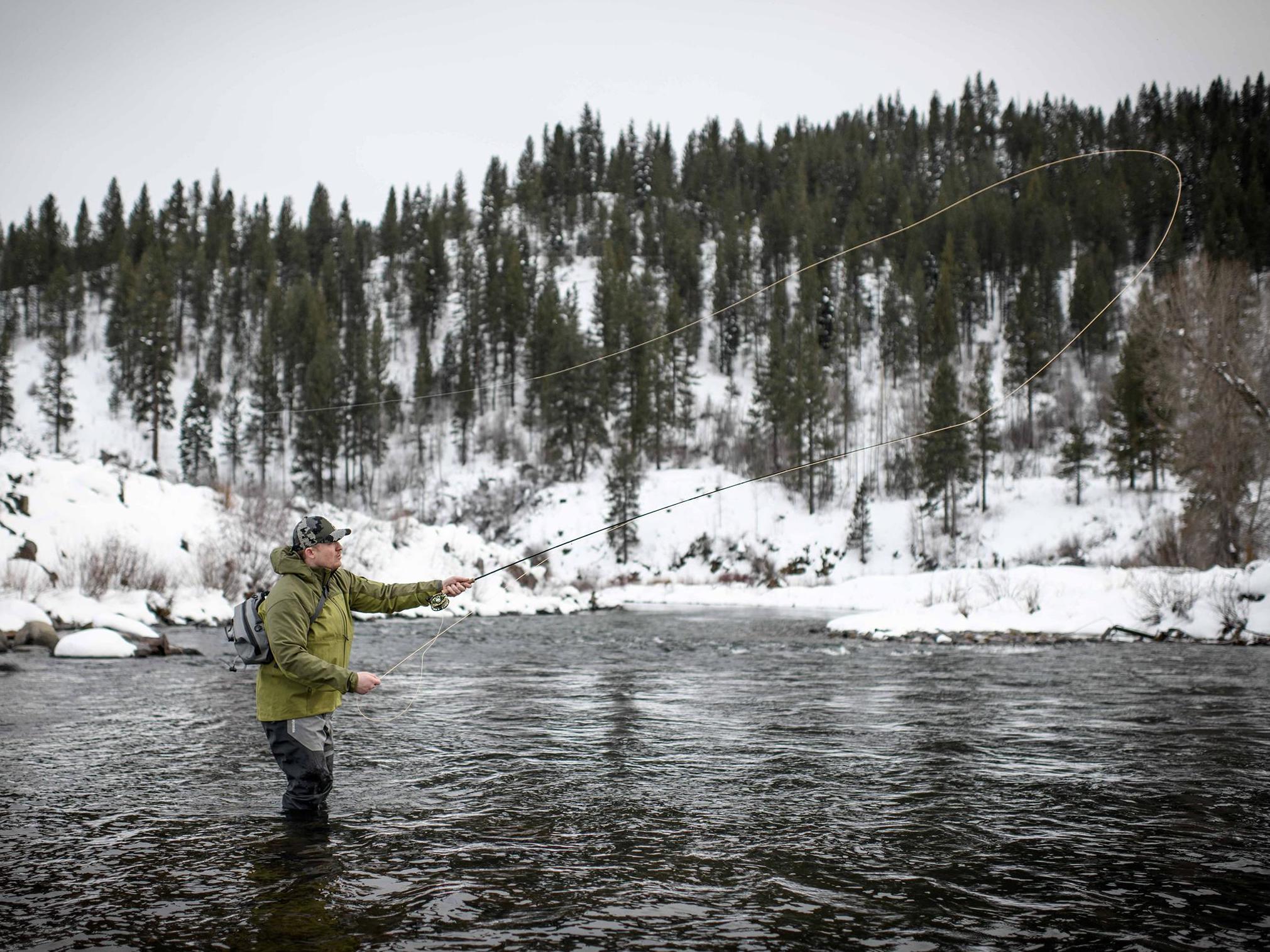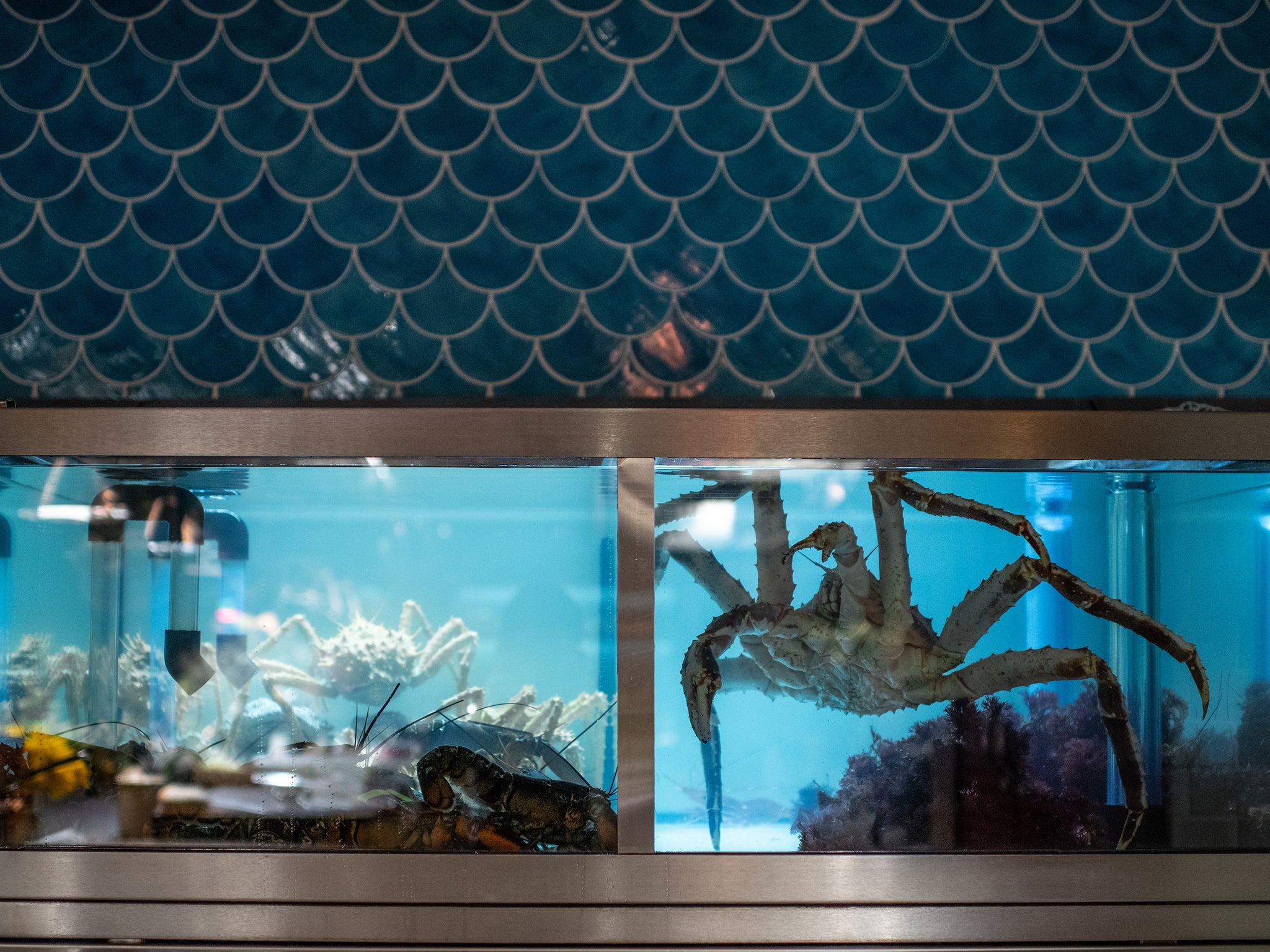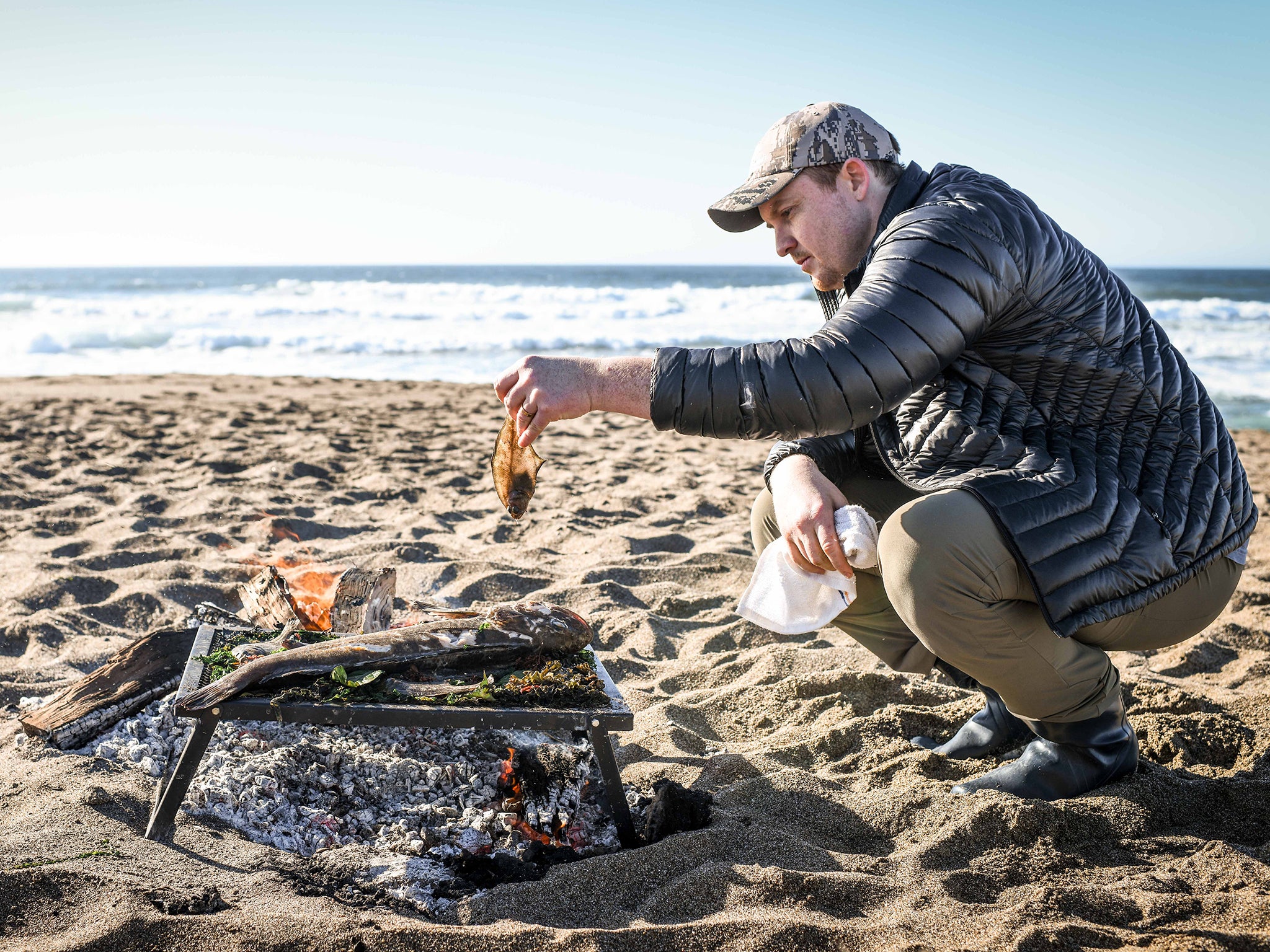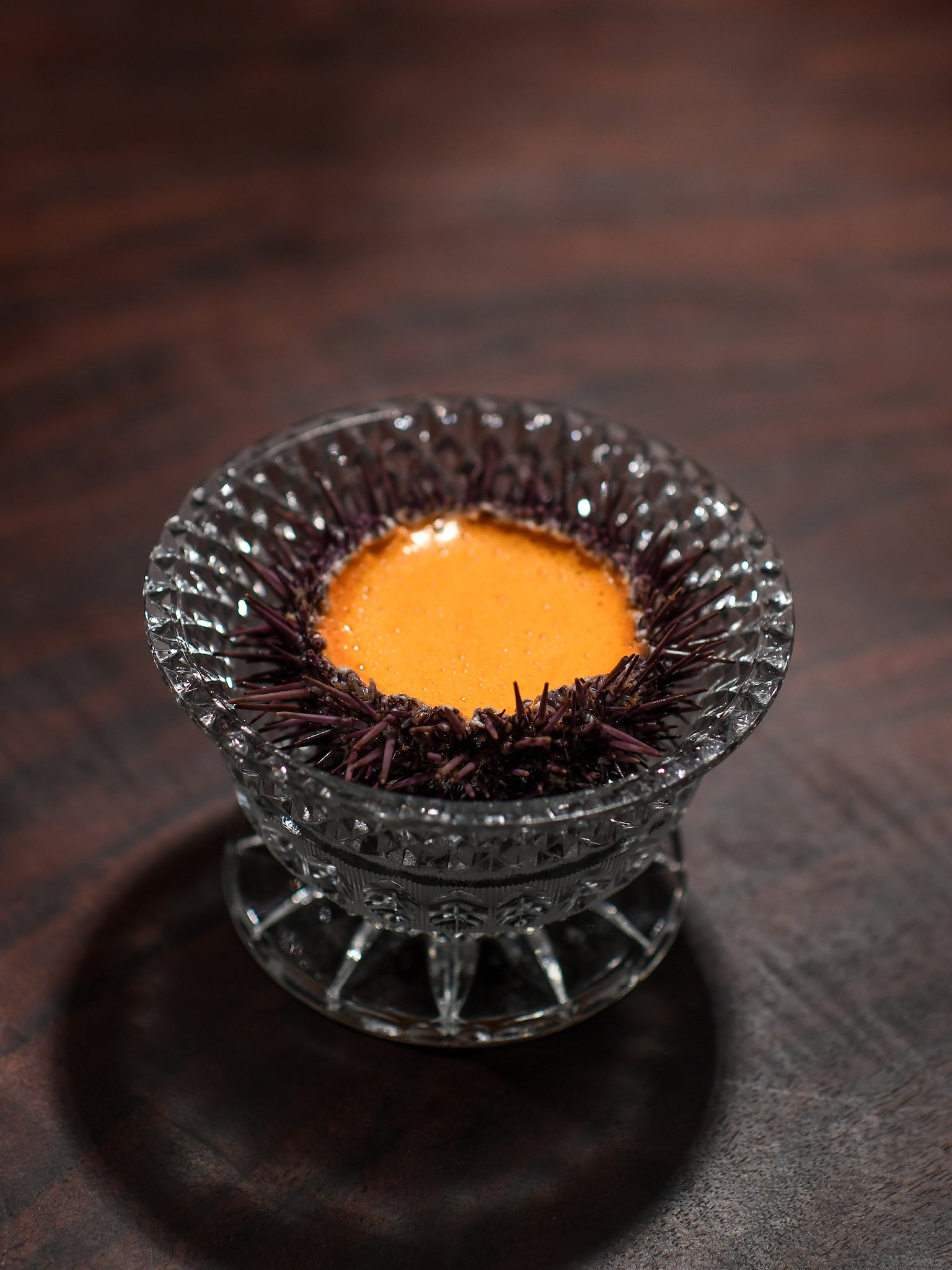Global warming makes California coast fishing more difficult, but one chef found a way to adapt his menu
San Francisco chef Joshua Skenes veers away from predictability with his menu at Angler, says Tejal Rao

Your support helps us to tell the story
From reproductive rights to climate change to Big Tech, The Independent is on the ground when the story is developing. Whether it's investigating the financials of Elon Musk's pro-Trump PAC or producing our latest documentary, 'The A Word', which shines a light on the American women fighting for reproductive rights, we know how important it is to parse out the facts from the messaging.
At such a critical moment in US history, we need reporters on the ground. Your donation allows us to keep sending journalists to speak to both sides of the story.
The Independent is trusted by Americans across the entire political spectrum. And unlike many other quality news outlets, we choose not to lock Americans out of our reporting and analysis with paywalls. We believe quality journalism should be available to everyone, paid for by those who can afford it.
Your support makes all the difference.It was late autumn, the start of Dungeness crab season, but too soon to melt the butter.
Domoic acid, a neurotoxin produced by algae and linked to warming ocean waters, had recently been found in such high levels in local crabs that the commercial fishing season in parts of Northern California had been delayed.
Some fishermen waited for the go-ahead. Others, good to go, worried that the catch would be scarce.
What happens when a region’s culinary identity is closely tied to an animal, and that animal is threatened by the mercurial forces of climate change? At the kind of restaurants that aim to be impenetrable bubbles of infinite pleasure, the answer used to be: nothing. The same luxury ingredients were brought in from wherever they were available, and the illusion was maintained.
At Angler, a seafood-focused restaurant that opened in September, close to the water on the Embarcadero, chef Joshua Skenes is redefining the San Francisco fish house with a tightly edited menu. His kitchen, which exults in the seafood of the Pacific Coast, also points to the ways in which many California restaurants are adapting in the face of environmental concerns, directing diners away from predictable pleasures.
James Syhabout, the chef of Commis in Oakland, often surprises customers with edible seaweeds, rather than big-ticket fish. Karen Leibowitz and Anthony Myint’s restaurant, the Perennial, serves farmed sturgeon and trout, raised on vegan feed. These efforts seem small, but they’re necessary: in a study published last week, researchers found that ocean temperatures had broken record highs for several years in a row, warming at a much faster rate than anticipated.
Skenes, the chef and an owner of Angler, opened his first restaurant, Saison, about a decade ago; it went on to win three Michelin stars. Back then, as a poster boy for the tasting-menu genre, he bought the best international seafood he could find on the market, shipping it in from Tokyo like so many other fine-dining chefs, regardless of the cost.

But over the past few years, Skenes has built relationships with local fishermen and farmers, and now the bulk of his ingredients come directly from people who work along the California coastline. “I asked fishermen to bring me anything alive, anything sustainable, as long as the quality was really high,” he says.
His menu is now a better reflection of his region, though he and his cooks find themselves with the kind of ingredients they might not have picked off an order form: sausage-shaped sea cucumbers and translucent bells of moon jellyfish.
“Someone’s got to push this stuff,” Skenes says. It helps that jellyfish and sea cucumber taste good, and that blueprints for preparing it have existed for hundreds of years in other cuisines.
The kitchen has learned to dice the raw jellyfish, with its clean flavour of the ocean, and serve it simply, with a dipping sauce. Cooks separate the sea cucumber skin from its muscle for cooking, then serve it grilled with meyer lemon.

Skenes, who will open a location of Angler in Los Angeles later this year, doesn’t pass on well-known local seafood when it’s available, including crab.
Lately, the kitchen has served a lot of purple sea urchin, in part because there are tons of purple sea urchin in the waters off California – multiplying at a shocking rate, invading and decimating kelp forests and threatening the habitats of other sea creatures. That, and they taste like a sweet and salty custard when pureed and returned to their shells.
Petrale sole, once a local mainstay, is a plainly hideous flatfish with both eyes on one side of its body. It has been fished commercially off the California coast since the late 19th century, when steam trawlers competed in deep waters beyond the Golden Gate Bridge and flooded the market with bottom-dwelling fish. When stocks of petrale and other groundfish collapsed, in 2000, after decades of indiscriminate trawling, federal regulations tightened.

“Petrale had always been a key species for us,” says Lisa Damrosch, who manages her family’s fourth-generation commercial fishing business in Half Moon Bay. Damrosch’s family, along with other fishermen, collaborated with the Nature Conservancy to start the California Groundfish Collective, which shares data among boats to manage the waters more carefully.
The fish is beautiful at Angler, presented on a platter, its delicate, almost jellied fillets firmed up over fire and lacquered with butter sauce at the table.
Angler’s purchasing ethic shapes its menu, but doesn’t lend it a self-righteous air or begin to explain its appeal, which is more obvious: the restaurant, overlooking the Bay Bridge, is grand, fun, well-lit and expensively designed, with a deep wine list and a hunting-lodge feel.
The executive chef, Nicolas Ferreira, cooks all the food with precision, over fire in an open kitchen adorned with flowers and plants. The gentle, teasing flavour of fire and smoke finds its way beyond grilled local spot prawns and spiny lobsters – into salt, into fruit, into salads.
Desserts, like most dishes, zoom in on just one or two ingredients. A rich coconut sorbet, served in the shell. A plain ice cream sundae, covered, at the table, in as much dark, salty caramel as you like.

The servers are polished, and witty, though on a couple of visits, dishes ordered were simply forgotten and never made it out. An unexpected 1980s pop soundtrack plays on loop – Lionel Richie, Billy Ocean, Phil Collins – seemingly compiled by a team of nostalgic, karaoke-happy dads. Though few diners appear to enjoy it, Skenes shrugged this off. He says the well-known music is meant to make people relax.
The menu might seem familiar too, with a roasted beet and a tuna tartare. But both dishes invert their cliches so completely as to become almost unrecognizable. The Pacific bigeye tuna, scraped from the fish with an abalone shell, has a rough variety of textures that keeps your attention as you eat it. The pieces of fish are set with softly jellied tomato water that slips cartoonishly off the spoon, and come with a giant rice cracker.
The beet is poached in beet juice, then suspended torturously above the fire for a few days so its flavour intensifies. Then it’s brought back to life, rehydrated. The result is a beet squared, and a reminder that some of the most exciting dishes on the menu are vegetables.
A raw radicchio, served whole, is drenched in an extraordinary, messy dressing so that when you carve into it, it looks like something fresh and bloody and still alive. In its layers, between its burgundy leaves, are pieces of charred radicchio mixed with aged garlic and shallots, which deepen the leaves’ bitterness and lends them an almost dank, animal quality as they crunch and splatter. Servers are likely to bring out a bib, but don’t be offended.
This radicchio requires a bib. It requires an appetite. It’s no substitute for a pile of crabs, but it’s a delicious distraction, should you need one.
© New York Times
Join our commenting forum
Join thought-provoking conversations, follow other Independent readers and see their replies
Comments